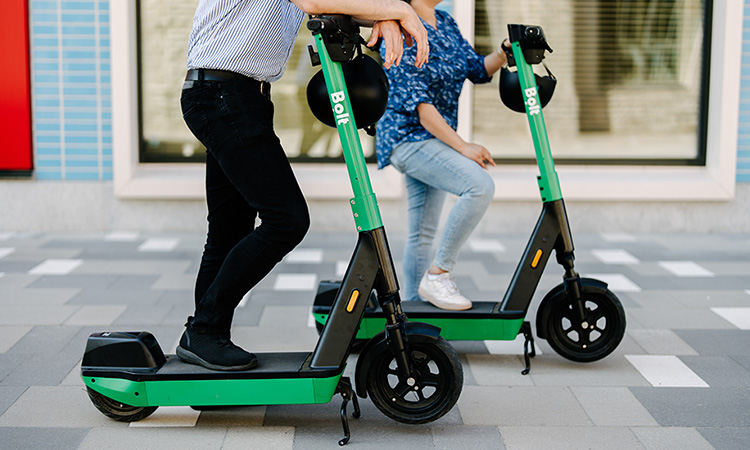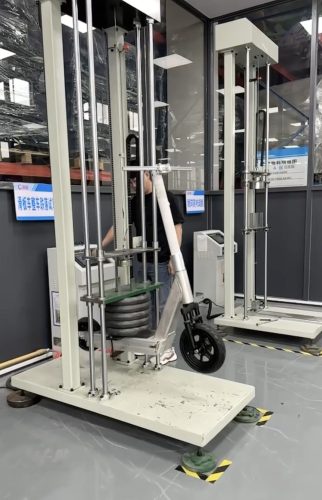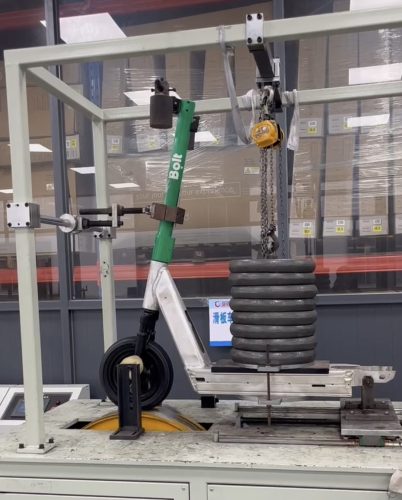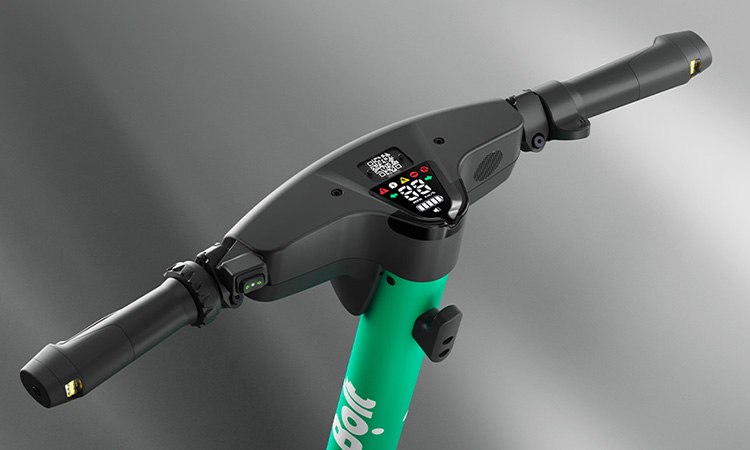Uncovering the hidden potential of Bolt’s scooters: There’s more than meets the eye
- Like
- Digg
- Del
- Tumblr
- VKontakte
- Buffer
- Love This
- Odnoklassniki
- Meneame
- Blogger
- Amazon
- Yahoo Mail
- Gmail
- AOL
- Newsvine
- HackerNews
- Evernote
- MySpace
- Mail.ru
- Viadeo
- Line
- Comments
- Yummly
- SMS
- Viber
- Telegram
- Subscribe
- Skype
- Facebook Messenger
- Kakao
- LiveJournal
- Yammer
- Edgar
- Fintel
- Mix
- Instapaper
- Copy Link
Posted: 19 October 2023 | Ardo Reinsalu - Bolt | No comments yet
Ardo Reinsalu, Director of Vehicles at Bolt, delves into how Bolt’s micro-mobility vehicles embody the revolution in urban navigation and city interaction through the integration of emerging technologies and their impact on the way that we move and engage with our cities.


Credit: Bolt
It’s no secret that emerging technologies have changed how the world looks, functions and even thinks in an incredibly short amount of time. Shared mobility – and the positive impact that its had on how cities operate – is no exception. Of course, the likes of public transport and active travel will continue to have a pre-eminent place in society, and rightly so, but the evolution that emerging technology has brought to how people move can’t be understated.
Shared e-scooters cannot afford to be the analogue rollers that many of us enjoyed as children; they need to be intelligent”
Though we have more than 620 engineers here at Bolt – it’s no mean feat to develop and run six product verticals within the same eco-system, after all – I believe that the work that we do within our e-scooter function best embodies the vigour and expertise with which we embrace emerging technologies.
There aren’t many major cities in the world in which micro-mobility doesn’t play a notable role in the urban landscape. For one, Bolt has over 260,000 scooters and e-bikes deployed in more than 250 cities across 25 countries, making it the largest scooter provider in Europe. As such, it’s our and our peers’ responsibility to ensure that the transport mode fits as seamlessly into the lives of pedestrians as it does riders’. To achieve this, shared e-scooters cannot afford to be the analogue rollers that many of us enjoyed as children; they need to be intelligent. And, for this, we turn to components which many turn to to make the world go round: sensors and micro-processors.
From analogue rollers to intelligent mobility solutions


Credit: Bolt – Engineers drop-testing the new scooter frame with heavy load.
Sensors and micro-processors mean that scooters are considerate of all members of society, both when they’re moving and stationary. They inform the features that make up our SafeRide System, including the detection of skidding, abrupt braking and tandem riding. This means that we can proactively take steps to ensure that they don’t happen again, like pushing educational materials (such as our recently launched Rider Academy) or inflicting temporary bans. It’s gratifying to see the real-world improvements that this can achieve, like the 30% drop of tandem rides in Munich in just five months since the technology was introduced.
Sensors can also proactively tell us if the health of a vehicle needs tending to, so that we can take preventative maintenance action to keep the good times (and scooters) rolling.
Then, once a scooter is parked, sensors can also tell us if a vehicle has a tilt of more than 15%, so that we can quickly take measures to ensure that it doesn’t topple over, like informing the most recent rider or our operations team in the field of the situation.
Sensors and micro-processors mean that scooters are considerate of all members of society, both when they’re moving and stationary”
In this day and age, how can we speak about emerging technology without mentioning artificial intelligence (AI)? It’s plugged into our ParkAssist+ feature, which verifies if a scooter is parked correctly by comparing the photo that the rider has taken at the end of their ride to thousands of photos of scooters parked in a correct and responsible manner. It then, essentially, plays a game of spot-the-difference in real-time, so that mitigating and rectifying actions can take place.
We’re also looking into what’s possible by combining artificial intelligence and on-board cameras. It’s already possible to detect pavement riding through this process; however, our ambition is to take these capabilities to the next level by proactively (there’s that word again) adapting to a wide variety of circumstances. For example, automatically reducing the speed of a scooter if the image recognition sees that a rider is entering an area with a high number of pedestrians.
Unlocking the potential of shared transport versus private ownership


Credit: Bolt – Life-cycle testing of Bolt 6 scooter with heavy load on a bumpy surface.
One of the significant differences between shared transport (like ride-hailing and shared scooters) and owned transport (like private cars) is the data that it produces and, crucially, what can be achieved with it. With over 150 million customers in over 45 countries, you can imagine the wealth of rich data that our services accrue. Fortunately, we have a bounty of in-house engineering and analysis teams which can mine this data to ensure that the opportunity doesn’t go to waste. The tangible benefits for customers, pedestrians and cities are easy to see. For example, we can ensure exactly the right number of scooters are in the right places according to typical usage patterns. Furthermore, thanks to having multiple transport modes within one ecosystem that are happy to talk to each other, if we see that a customer’s time and bank balance – and, notably, the city’s environment – might be better served by a different transport mode, we have the capability to make this point.
Great people make for a great company and service, but so do the likes of sensors, micro-processors, artificial intelligence, data mining, complex engineering and an insatiable desire to make cities for people, not cars”
Though sensors and micro-processors make the world go round from a software point of view, electric batteries are increasingly making the world go round from quite a literal point of view. Consequently, our in-house design and engineering team pays just as much attention to the components of our scooters that you can’t see (like the sensors and electric battery) to those you can (like the overall design). We believe that we’ve achieved the perfect equilibrium of range and weight with our 1.1kWh battery. It has a range of 90km, meaning that it can get you where you need to go and reduces battery swap operations – and the carbon emissions associated with them – by almost half. It’s also the optimal weight for a vehicle intended to transport one person.


Credit: Bolt
The responsibility with which electric batteries are used during and after its life is commonly discussed, and with good reason. We can only get excited about the potential and benefits of the ‘new’ way of doing things if it’s obviously better than the ‘old’ way. Our batteries use proprietary encrypted communication protocols to make sure that they can only be used inside our vehicles. Then, when they come to the end of their life (after an industry-leading eight years), we’ve designed them in such a way that they can easily be dismantled to be used for other energy storage applications, like our standalone mobile charging solutions or solar panels.
So, next time you see a Bolt e-scooter, you’ll know that there’s far more to it than meets the eye. Great people make for a great company and service, but so do the likes of sensors, micro-processors, artificial intelligence, data mining, complex engineering and an insatiable desire to make cities for people, not cars.


Related topics
Artificial Intelligence, Micro-mobility, Mobility Services, Multimodality, Passenger Experience, Sustainable Urban Transport
Related modes
Bikes & Scooters
Related cities
Munich
Related countries
Germany
Related organisations
Bolt
Related people
Ardo Reinsalu








